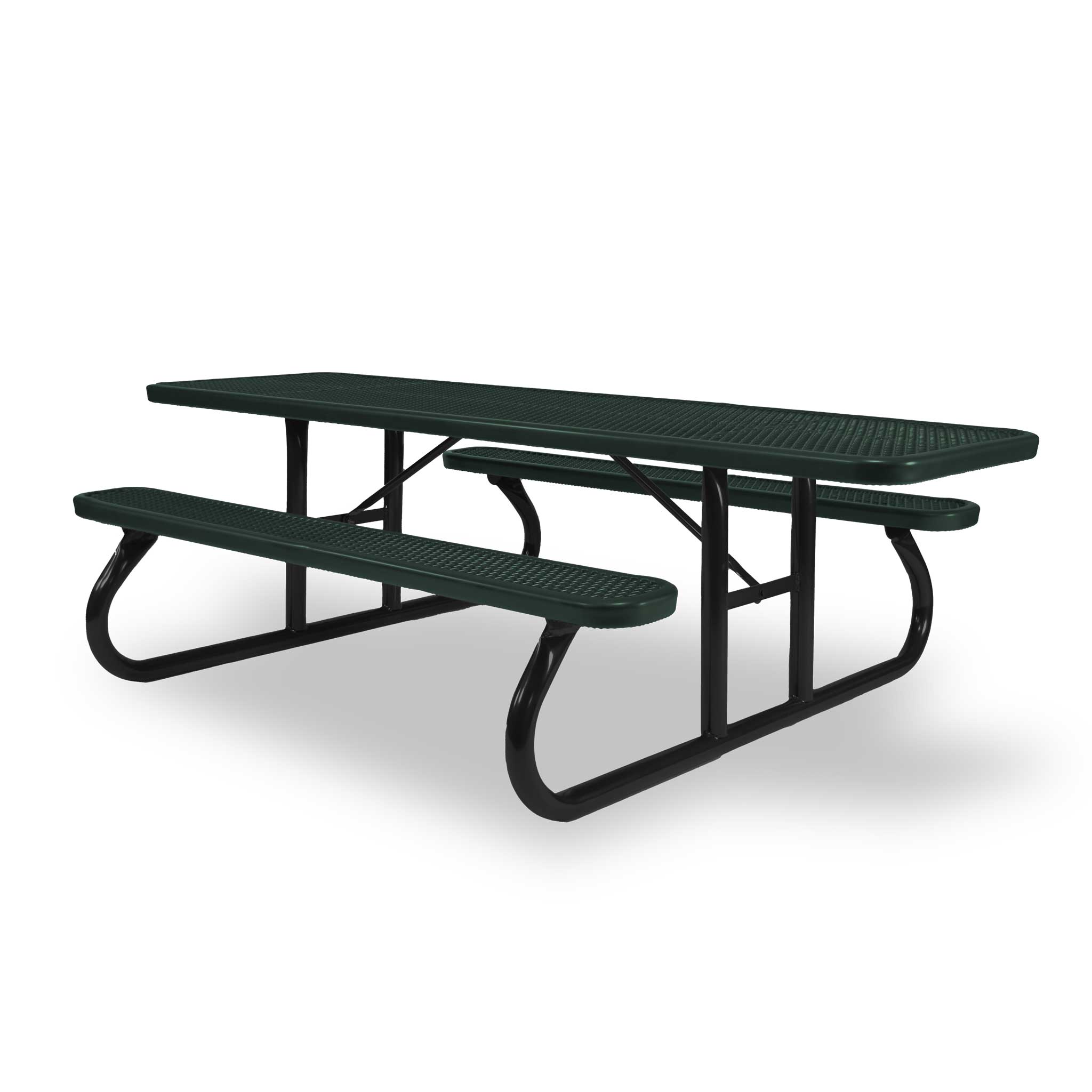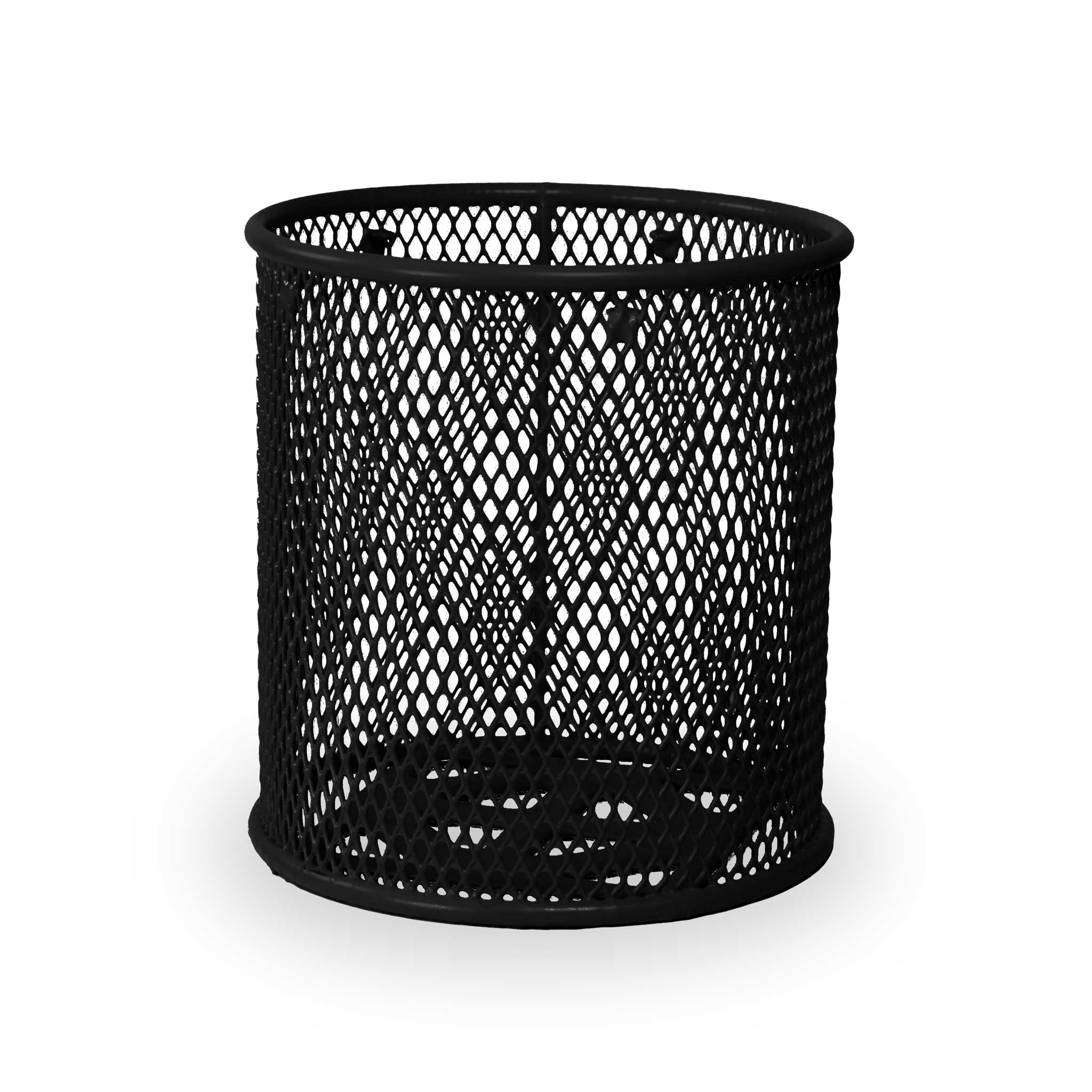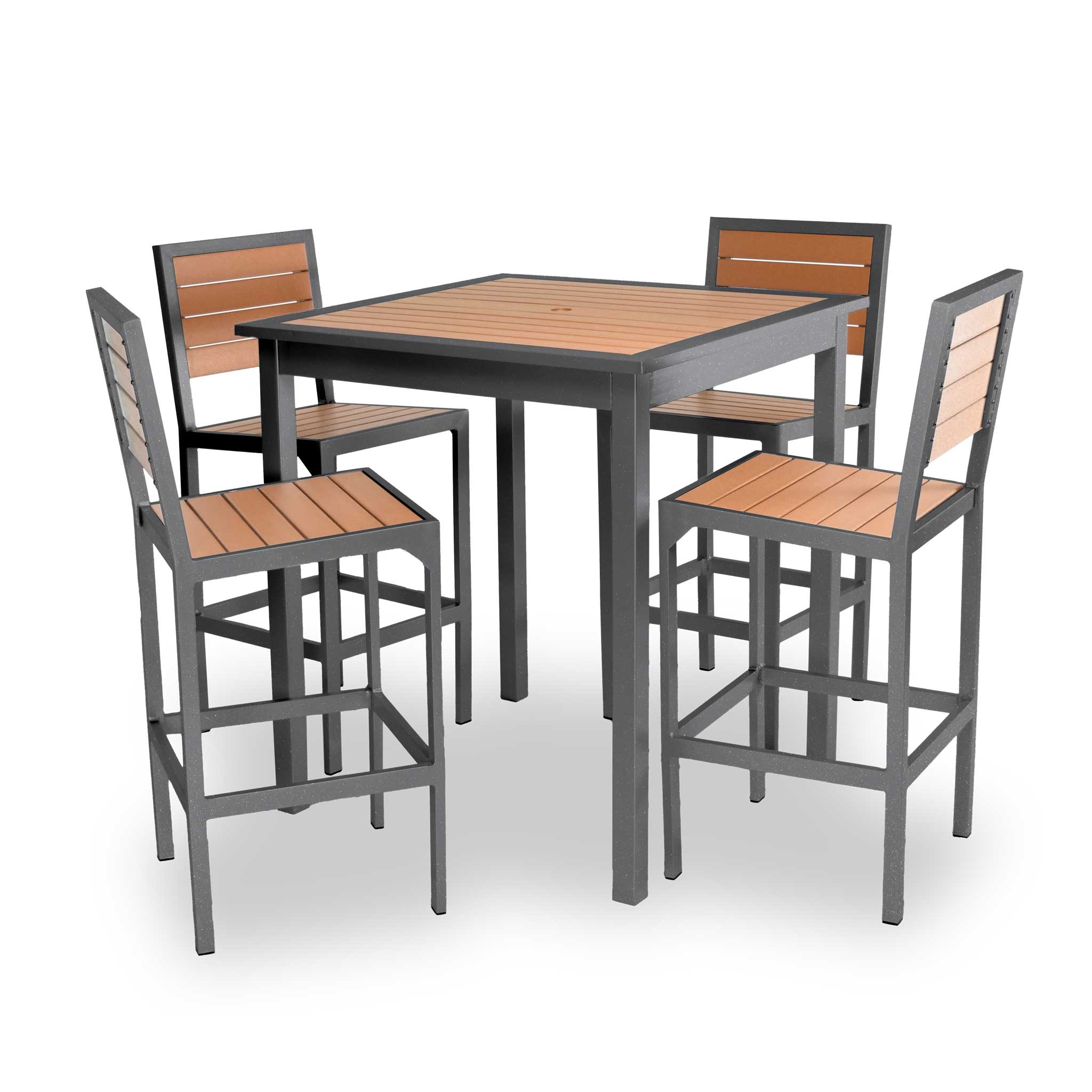Designing Innovative College Campuses

Schools | Jun 13, 2022
If you are trying to determine how to design a college campus, it might be challenging to decide where to start. As collections of several buildings, each with its functions, there are many things university designers need to keep in mind. Using quality college campus design tips can help guide you and your design teams through the process and incorporate every element and improvement you need.
Table of Contents
- Research and Implement Urban Planning Strategies
- Create a Focus
- Design for Inclusivity
- Create Welcoming Student Buildings
- Keep Commuters in Mind
- Upgrade Your Dining Hall
- Modernize Your Library
- Incorporate Biophilic Design
- Prioritize Sustainability
Research and Implement Urban Planning Strategies
Colleges often function like small cities, creating a comprehensive, self-functioning community that provides students with everything they need on campus. Urban planning strategies can help you implement changes that support your campus’s goals, needs and design.

You can start by researching different types of urban planning to decide what method will work best for your school and the kinds of changes you want to make. Some examples of urban planning include:
- Master planning: This type of urban planning involves working with empty places and building from scratch. Schools often buy new land when expanding, and this kind of planning can help you visualize how you can best use and develop new spaces to create meaningful campus additions.
- Urban revitalization: In urban revitalization plans, teams target specific existing areas of cities to upgrade. What cities choose to update depends on their needs, making it incredibly customized for different spaces. For universities, this might include renovating dorms with better amenities, redesigning dining halls for better flow or paving roads and parking lots around campus. Communities are critical resources for this urban planning type and can highlight where officials should direct their revitalization efforts.
- Economic development: Economic development planning aims to boost the local economy through various financial opportunities. City planners might focus on adding more businesses to areas to create more jobs or more services to keep individuals from staying within the city, like adding more gas stations for increased availability. College campuses can open a new dining hall to offer more job opportunities for students and community members or open a campus book shop to encourage students to buy their books there instead of off-campus.
- Environmental planning: Some cities want to prioritize their sustainability and environmental impact, so they will use environmental planning to make decisions that align with those values. This planning might include implementing changes that reduce specific types of pollution common on your campus or create specific spaces where habitats can recover or flourish.
- Infrastructure planning: Cities and campuses need infrastructure to support movement flow and space function. Infrastructure development planning allows you to expand or improve specific infrastructure elements on your campus, including plumbing, electricity, roads and safety systems.
Understanding the different urban planning types can help your design teams understand how to organize and classify your improvement efforts and apply specific techniques. City planning involves several processes that your university can use to enhance particular campus elements. For example, building your campus on an axis can help direct movement naturally, creating walkways that guide students, faculty and visitors throughout campus.
Create a Focus
Regardless of the size of your campus, it will take students and visitors a second to get oriented when they arrive and determine how to get where they need to go. Focuses are an eye-catching structure somewhere central on-campus that people can use as a landmark when navigating campus. Current students and staff can use it to help give new people directions around camps. Because of its distinctive features, it will stand out, making it easy for people to find.

Focuses can also be powerful branding and marketing tools for your university. While you might have teams dedicated to making content for your school, your campus itself is an essential selling tool you can use. You can add to your focus’s landmark abilities by making it the center of promotional efforts and featuring it in brochures or social media posts. Potential students and visitors will associate your focus with your school and might even seek it out when visiting campus.
Additionally, focuses can become central to campus culture. It might become an important gathering place for students where they can sit and chat with friends. Clubs might host events around the focus, using its landmark feature to ensure other students can find the event.
Design for Inclusivity
College campuses are gathering places for many types of people and draw students and faculty from various backgrounds. Each person will have unique experiences they want to get from being on campus, and everyone has multiple ability levels that designers should consider when designing campus spaces.
While designers cannot create an environment that caters to all abilities and needs, they should focus on developing a learning environment free from distractions and hindrances. Students come to universities to receive a quality education, so this should be the primary goal when designing inclusive campuses.
However, it can be helpful to think about other student goals when considering inclusivity and accessibility. What different experiences bring students to campus? Students often expect particular social experiences while at college, so ensuring your spaces are inclusive of various abilities can ensure that all students can make friends and participate in events.

Some fundamental inclusivity and accessibility ideas to consider for your campus include:
- Ramps, cutouts, automatic doors and elevators: These features are standard in public spaces and can ensure all your areas are accessible to people of various abilities when designing your campus. Promise that students can access any space they want with ease, regardless of mobility. Installing these features throughout features goes beyond student accessibility — your staff might need mobility aids, too, and you can ensure all family members can participate in events like graduation.
- Larger bathroom stalls: Larger stalls in restrooms can provide space for people with wheelchairs or other mobility aids. These spaces can also offer essential room for parents with young children, who might need the space to keep their kids close or help them use the restroom while on campus.
- Lever door handles: Round doorknobs can be challenging for some people to open, preventing them from accessing specific spaces. In addition to automatic doors, consider offering lever door handles to make doors easier to open for all people on campus.
- Talking crosswalks: Many crosswalks rely on visual cues to indicate when people can cross. Consider adding auditory aspects to crosswalks students need to cross to get to spaces on campus that verbally give instructions. These features can help blind or visually impaired people stay safe when crossing the street on your campus.
- Interpreters: Deaf and hard-of-hearing students can access all campus activities with a team of interpreters who can cover everything from daily classes to events. Adding subtitles to any information or promotional videos can ensure that these students access all content you send out.
- Gender-neutral bathrooms and housing: Inclusivity and accessibility can include more than just ability levels. You can ensure that every student has a space to be themselves and feel safe on campus by offering various amenities like gender-neutral spaces. Transgender and nonbinary students can elect into safe housing with this option and ensure they have somewhere to use the restroom where they feel safe.
With several ways you can boost inclusivity and accessibility on your campus, you can create an environment where all students can learn and feel welcome at your school.
Create Welcoming Student Buildings
Your buildings offer vital spaces where students can rest, socialize and study. While students go to universities to learn, they often pick schools based on more than just programs — they often look for specific social and living experiences. This is their first time living away from home for many students, so offering ample spaces where they can do everything from eating and sleeping to studying and making friends is vital.
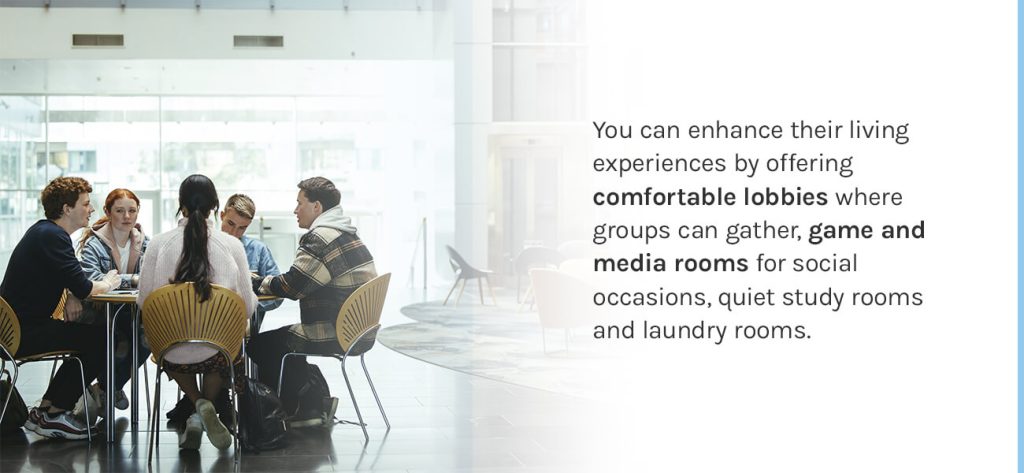
You can offer these various areas through your residence halls and student union. Your residence halls are crucial student spaces where they will learn to live with other people and make friends. You can enhance their living experiences by offering comfortable lobbies where groups can gather, game and media rooms for social occasions, quiet study rooms and laundry rooms. After renovating these spaces, you can show them off to potential students and families during tours.
Your student union can be an excellent resource for many types of campus experiences. Provide comfortable, flexible seating options that students can move around as they wish and inspire them to stay as long as possible. Consider offering charging stations and entertainment options to create different possibilities for various spaces. Students can choose to study, eat or socialize with more custom solutions. You can even offer printing and computer rooms to help give more resources to your students.
Keep Commuters in Mind

While many universities focus on students who live on campus when making design decisions, commuters have unique needs you should also consider and can drive campus improvements. You can ensure your commuters’ best interests by checking that you have enough accessible parking and that lots are in good condition.
You can also care for commuting students once they arrive on campus. Many commuters forgo meal plans, so they don’t need or use the dining halls. However, they still need food if they stay on campus for long periods. You can offer alternative food options, like food kiosks, carts and shops that give commuting students access to food while studying or waiting between classes. Professors, staff, other students and visitors can also take advantage of additional food opportunities.
Your comfortable student spaces can also benefit your commuters. When they have flexible, comfortable areas they can relax and change to fit their needs, commuting students can feel more welcome on campus and spend more time there.
Upgrade Your Dining Hall
Dining halls are significant buildings for your students. You can inspire healthier eating by offering good food and many options at your dining halls, leading students to choose your dining facilities over local fast food joints. Consider the food options you offer. Provide a diverse selection to keep students’ interests and also to cater to different dietary needs, including:
- Vegetarian and vegan.
- Halal and kosher.
- Gluten-free and celiac-friendly.
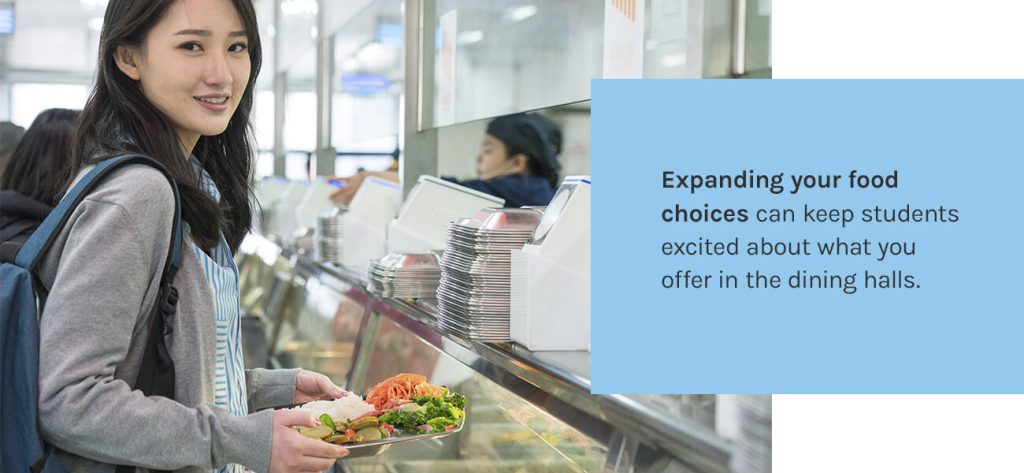
Other than dietary needs, you can also offer specific foods or amenities. Consider offering self-service coffee and cereal bars for easy breakfast options. Upgrading your grills can open various options, from Habachi grills to quesadillas. Expanding your food choices can keep students excited about what you offer in the dining halls. Think about offering digital menus so students can check selections before entering.
If you want to update your dining halls, you can also look at the layout and furniture options you have. Does your layout allow for easy movement throughout the hall? You might get long lines during mealtimes, so ensure students can still comfortably move around and sit without lines impeding their meals.
Like with other student spaces, be sure to offer flexible seating options. Furniture that your students can quickly move around can allow them to create more social experiences in the dining halls. They can decide to have a quiet meal alone or move chairs together and eat with friends.
Depending on your student needs, you can also consider offering expanded hours. Many students have early or late classes that cause them to miss traditional mealtimes and make getting food while on campus challenging. Student-athletes often have practices and need to stay on strict nutrition plans to keep themselves healthy. Expanding your hours earlier and later each day or on certain days can help students get enough food to power them through the day.
Modernize Your Library
Libraries are important on-campus information centers, providing students with resources they can use to study and research. However, books might take up critical study spaces in your library. Digitization is excellent to ensure students can still access library resources while opening up physical space in the building. If you still want to offer physical copies of books, you can create underground storage systems that quickly pull books as needed, leaving the public library areas to the students.
With extra space, you can offer many types of areas for students in your library:
- Computer and printer rooms: Depending on your student body size, you might have noticed long lines around the printers and computers before classes as students prepare for their day. Add more printers in your library and designate computers for printing to help open other public computers for students who need to study or research. You can separate these in a room and group other computer spaces together to make them easy to find.
- Quiet study spaces: Students will often find themselves in the library searching for a quiet place to study. Establish certain rooms as silent study spaces and set conduct rules for these spaces. These might include no eating, talking, loud music or other distracting noises. This type of space can be very helpful for students who get distracted easily or have loud roommates.
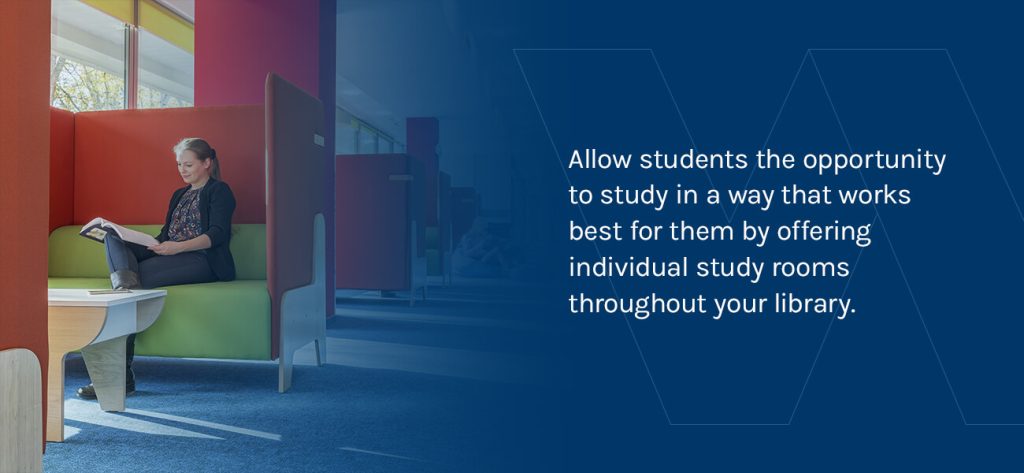
- Single study rooms: For some students, even shared silent study spaces can be too distracting. Allow students the opportunity to study in a way that works best for them by offering individual study rooms throughout your library. Include flexible, comfortable furniture, like chairs with adjustable backs or seats to accommodate long periods of studying. Make it easier for your students to use these spaces by allowing them to secure rooms online.
- Group study or conference rooms: Many professors assign group projects that require students to work together outside of class. You can create productive environments where they can work together through conference rooms. Allow students to collaborate with conference-style tables and wheeled chairs. You can also offer whiteboards or projectors to help students visualize ideas or practice presentations. Faculty and staff can also use these rooms for important meetings if necessary. Like your independent study rooms, allow students and staff to reserve rooms before using them.
Libraries can be powerful resources for students. Modernizing its function and expanding its capabilities can help more students find the study experience they are looking for on campus.
Incorporate Biophilic Design
Green spaces can help significantly reduce stress and increase your connection with nature. Regardless of how urban your campus is, your students can benefit from areas full of plants and greenery that encourage them to slow down and relax.
University green spaces can be straightforward — an open, green lawn can provide countless benefits and functions to students. Students can use the area to meet up with friends, study while getting fresh air and eat. Open spaces can inspire physical activity as students bring frisbees, soccer balls and other equipment to enjoy the good weather and time with their peers. Some professors might even take the opportunity to move lectures outdoors on lovely days.

Enhance your green spaces by adding flowers and trees around your lawns and including outdoor seating areas. Trees and flowers can help beautify your campus, appealing to current and potential students alike. Outdoor tables, chairs and benches offer more opportunities for students to get outside, regardless of whether they choose to socialize, work or relax.
Residence halls are great spaces to incorporate greenery. Plants and trees can help create a more homey feel to the fronts of your dorms, where students can enjoy a piece of nature as they make their way to class. Plants and trees can be good privacy barriers for first- and second-floor rooms, providing some cover over the windows that passersby might be able to look in easily.
Prioritize Sustainability
Many schools want to support sustainability on campus, and you can do that through your campus’s design. You can reflect your values through your layout and design. For example, larger, open spaces can communicate how you value community and social interaction. Sustainability is another value you can incorporate into your buildings and layout themselves.
How you design your buildings and configure them can help them become more energy-efficient, creating a greener and more sustainable campus. Consider facing your buildings toward the sunlight to make the most of natural light over artificial lamps and bulbs. Line your hallways and study rooms with large windows to optimize daylight for communal spaces.
Institute campus-wide recycling and reuse habits. If you offer takeout containers in the dining halls, consider investing in options that can break down in landfills over plastic and styrofoam options, and encourage students and staff to bring their travel mugs to campus coffee shops. Add plenty of bike racks to invite students who live nearby in dorms or apartments to bike to campus over driving.
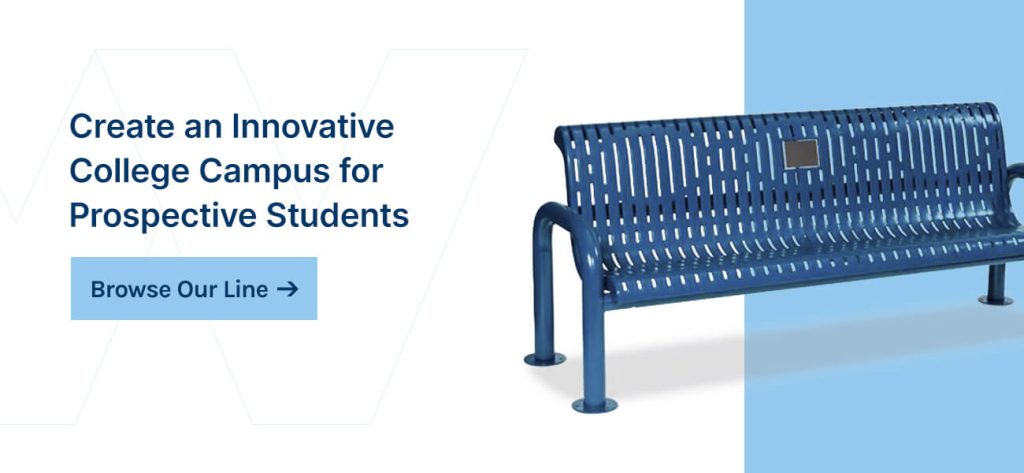
Create an Innovative College Campus for Prospective Students
Incorporating college design tips into your planning stages can offer you several options when trying to meet your campus goals and functions. From overall layout with urban planning to improvements to specific buildings, you can better your campus for your student body in many ways.
At Wabash Valley Site Furnishings, we understand how quality outdoor furniture and site amenities can impact your campus. We have solutions and benefits catered specifically to the educational sector, helping us understand and meet your specific needs. With several collections and styles to choose from, you can find the perfect match for your school’s aesthetic and customize the color to promote school spirit.
Explore our collection of outdoor furniture and site amenities today and discover how you can transform your outside campus spaces.
Categories
Recent Posts
Sign up for our newsletter
Share this post:

